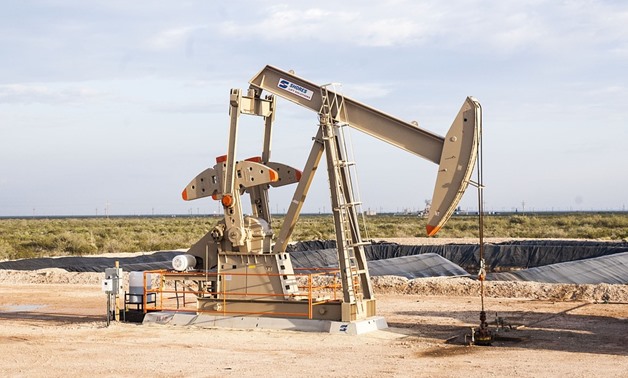
Oil field- Creative Commons via Pixabay
CAIRO – 29 August 2018: In fiscal year 2018/2019, the targeted investments in petroleum sector are estimated at LE 145.6 billion ($8.12 billion), marking 15.5 percent of the total investments of the year.
Natural gas investments represent 91 percent of petroleum investments which amount to LE 132.8 billion.
The investments of the crude oil extraction sectorallocate 8.7 percent of the petroleum investments with a total of LE 12.7 billion, while other extractions allocate LE 65 million.
The share of the private sector inthese investments reaches LE 137.5 billion or 94 percent, while the public sector provides the other 6 percent.

Egypt's petroleum investments in 2018/2019/Hanan Mohamed/Canva
Egypt recently signed several oil agreements for the exploration of oil and gas in several areas of Egypt, including the Mediterranean, Western desert, Nile Delta and the Gulf of Suez.
Earlier in August, Minister of Petroleum and Mineral Resources Tarek el-Molla signed two new agreements for the exploration of oil and natural gas in Sinai and the Suez Gulf with investments of $65 million.
The minister also signed grants of $3.5 million, an official statement revealed.
The first agreement is signed with General Petroleum Company (GPC) in Sinai to improve its production within the framework of the Ministry of Petroleum’s plans to increase production and support the national companies working in oil and exploration field.
The statement referred that the second agreement was signed with the Petroleum Corporation and Zaafarana Petroleum Company, OceaneerZaafarana, and Sahary for Oil and Gas in the Gulf of Suez.
Molla announced that the number of signed petroleum agreements reached 61 new agreements since 2017 with a minimum investment of $14 billion to explore oil and gas in Egypt’s land and sea areas.
He noted that Egypt’s existence on the international petroleum map will help the state restore its historical role in the region.
The minister said that the oil sector will continue to sign more petroleum agreements as these agreements are considered the cornerstone for achieving new oil discoveries and attracting more investments.
On August 14, Molla signed three new oil agreements for the exploration of oil and natural gas in the Mediterranean, Western Desert and Nile Delta regions with investments of $139.2 million, and grants of $55 million for drilling 15 new wells.
Moreover, the Egyptian General Petroleum Corporation signed a new petroleum agreement on July 30, with the British Company BP to explore and produce oil and gas in the northeast of Ramadan in the Gulf of Suez with investments of about $46 million, in addition to a $4 million grant to drill three wells.
In July, the Petroleum Ministry signed three agreements for oil and natural gas exploration and production in North Sinai and the Gulf of Suez.
The first agreement was signed with South Valley Egyptian Petroleum Holding Company (Ganope) and Britain's GHP Corporation to dig six new wells in the western Gebel El-Zeit Concession with total investments of $6 million.
Gebel El-Zeit is an isolated, elongate mountain that reaches up to 457 meters and overlooks the southern end of the Gulf of Suez.
The second agreement was inked with the Egyptian General Petroleum Corporation (EGPC) to search for oil in RasFanar Concession in the Gulf of Suez, while the third one was signed with EGPC and Britain's Perenco Oil and Gas Company for exploring in North Sinai maritime concession.
Egypt’s production of natural gas increased in December 2017 to reach 3.4 million tons, up from 2.7 million tons in December 2016.
Egypt’s gas production currently stands at 5.5 billion cubic feet a day, after adding some 1.6 million cubic feet as a result of starting production from the aforementioned projects.
The country's total natural gas consumption is about 6 billion cubic feet per day, of which roughly 65 percent goes to the electricity sector.

Comments
Leave a Comment